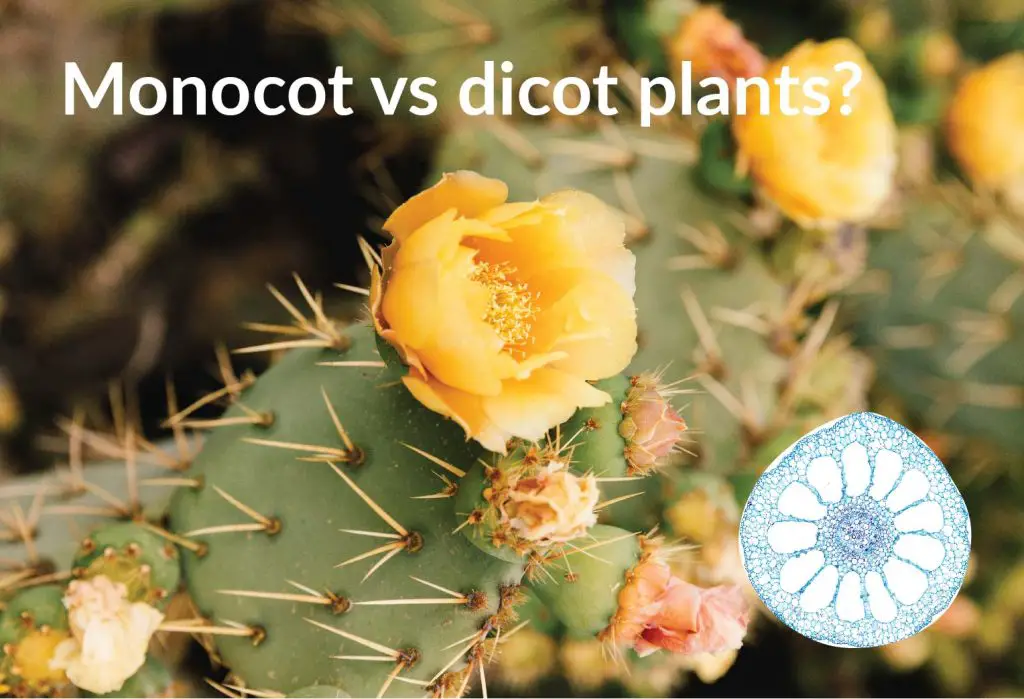I am often amazed by the delicate structure of the cross-section of the plant stems under the microscope. Various sizes of cells are arranged in an organized way like the image below, and the way they are organized actually reflects their functionality. This is the magic of biology.
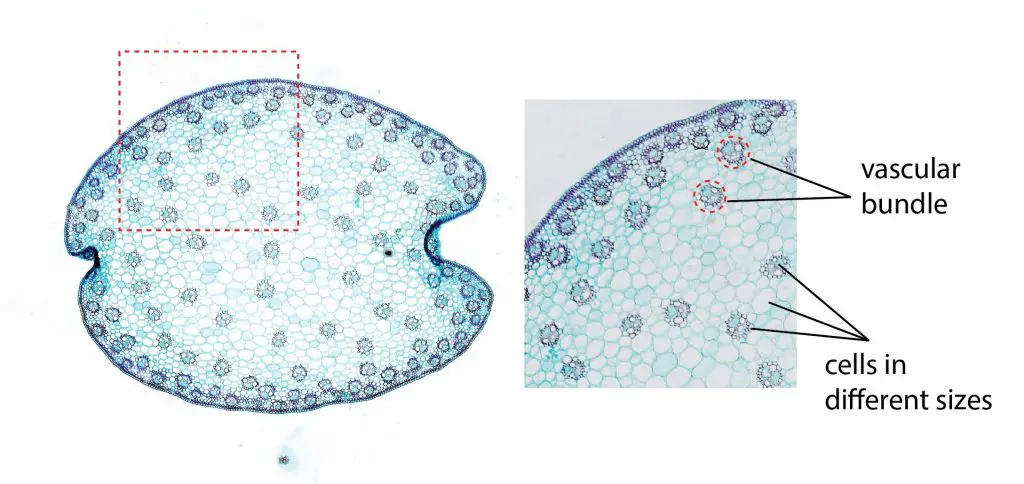
[In this figure] The cross section of the zea mays (corn) stems.
The cells are arranged in an organized way, and specialized cells are groups together to form vascular bundles. This is an example of a monocot stem.
This article covers
The vascular systems
The flowering plants have vascular systems, which function like the blood vessels that can bring water and nutrients to every cell. Like what we discuss in the learning plant biology post, Xylene transports water unidirectionally from the roots. Phloem carries nutrients made from photosynthesis (typical from the leaves) to the parts of the plant where need nutrients.
The vascular systems consist of many vascular bundles, which is one of the most obvious features in the cross section images. If you look at a number of these cross section of plant stem images, you will notice that these vascular bundles are organized in two distinct ways. This is one of the features that separates the flowering plants into two groups: monocots and dicots.
Vascular systems in Dicot
In the dicot stem, the vascular bundles are arranged in a ring, with pith concentrated at the core of the stem. As the plant grows, existing bundles grow larger. The cambium, specifically in dicots, is the main growth tissue in the stem; it produces xylene inward and phloem outward. In some mature woody dicots, the vascular bundles join together to form continuous rings around the interior of the stem.
Vascular systems in Monocot
On the other hand, monocot stems have vascular bundles scattered throughout the plant interior (some have a hollow center). As the plant grows, monocot stems generate new vascular bundles for the new tissue. The ground tissue is the tissue neither vascular nor dermal tissue in the monocot.
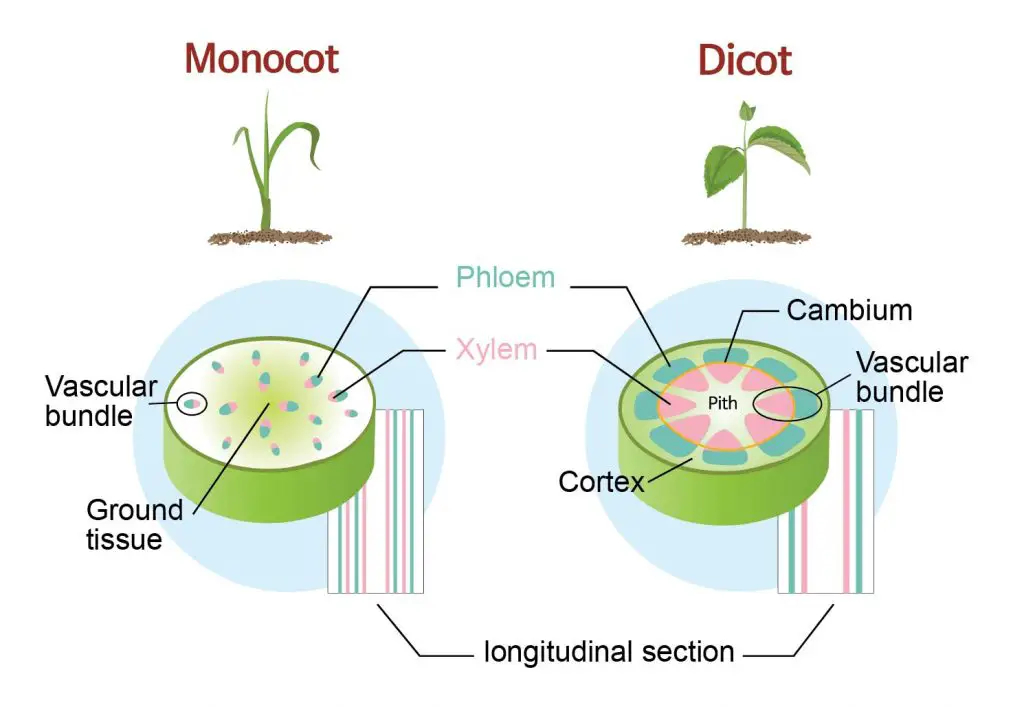
[In this figure] The difference of vascular bundle in the monocot and dicot.
The cross section and the longitudinal section of the stem are shown. Phloems are in green color and xylems are in pink color. The monocot vascular bundles are scattered while the dicot vascular bundles are organized in a ring.
Below is the cross section of a monocot and a dicot. Can you tell which is which based on the organization of the vascular bundles?
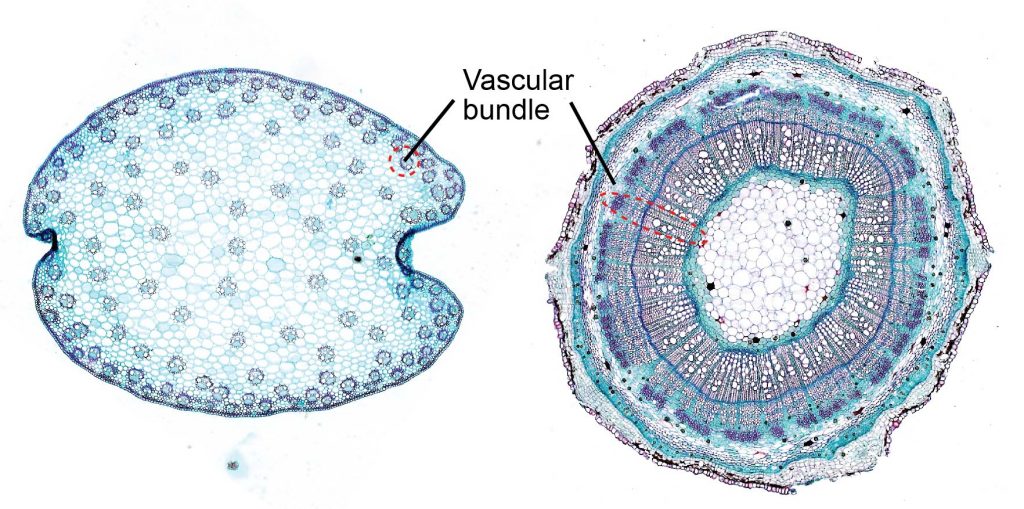
[In this figure] The cross section of the monocot and dicot stem.
The cross section on the left is from corn, a monocot. The cross section on the right is from a willow tree, a dicot.
What is monocot plant?
Monocotyledons (monocots in short) mean the seed contains only one embryonic leaf or cotyledons. Their characteristics are seeds with only one embryonic leaf, a fibrous root system, scattered vascular bundles in the stem, leaves with parallel veins, and flower parts in threes or multiples of three (3, 6, 9 petals).
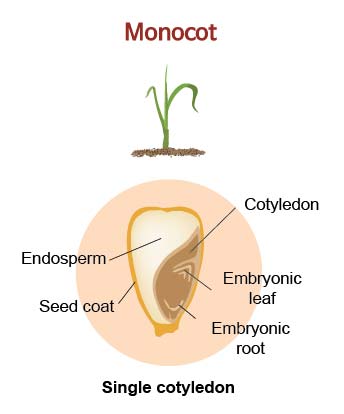
[In this figure] Monocot seeds.
Monocotyledons” mean the seeds contain only one embryonic leaf or cotyledon.
Examples of monocot plants
Rice, corn, and wheat are monocots normally grown as annual plants. They are great examples of the typical leaf venation of monocots.
Other examples are grasses, orchids, tulips, palm trees, bamboos, and bananas.
Palm trees are an exception for monocots because most monocots can not grow very tall and large. Palm tree stems are thickened by parenchymal cells that surround the vascular bundles to create a more firm stem to support its tall size.
What is dicot plant?
Dicotyledons (dicot in short) refers to the seed having two embryonic leaves or cotyledons. Their characteristics are seeds with two embryonic leaves, a tap root system (i.e. main root), ring of vascular bundles with cambium in the stem, leaves with reticulate veins (net-like), and flower parts in fours or fives.
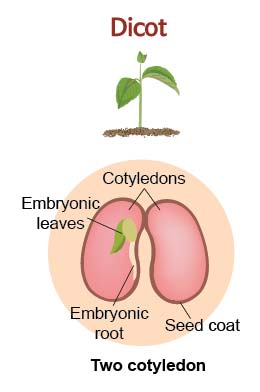
[In this figure] Dicot seeds.
Dicotyledons” refers to the seed having two embryonic leaves or cotyledons.
Examples of dicot plants
Cotyledon stores an abundance of energy to support the new sprout before the true leaves can sustain the plant by photosynthesis. Because the cotyledon is so rich in nutrients, we consume certain seeds such as pea, bean, almond, walnut, and pecan.
Other examples are chrysanthemums, roses, magnolias, and sunflowers.
One interesting example is cacti. Wait! Do cacti have flowers and leaves? Yes, they do. Cacti do have flowers that bloom under the right conditions. When they bloom, their flowers have a number of petals (although it may be hard to count). Cacti do have leaves too; they are just modified to reduce water loss.
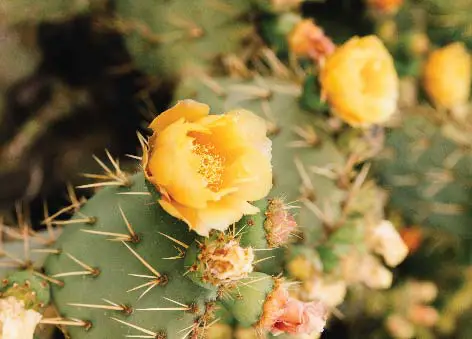
[In this figure] The flower of the cactus.
Cactus flowers have dozens of petals.
Difference between monocot vs dicot
Monocots differ from dicots in five distinct structural features: seed, leaf, stem, root, and flower.
Seed
The monocot has a single cotyledon and embryonic leaf while the dicot has two cotyledons and two embryonic leaves.
Leaves
The monocot veins in the leaves are parallel while the dicot veins are net-like, reticulate.
Stem
Monocot stems have vascular bundles scattered throughout the plant interior. In contrast, the vascular bundles in the dicot stem are arranged in a ring, with pith concentrated at the core of the stem.
Roots
The monocot roots can not increase their diameter as they grow; instead, they grow more roots. The dicot roots have a long and deep primary root, with smaller secondary roots growing laterally off the primary root (tap root system).
Flowers
The monocot flower parts are numbers in the threes or multiples of three, while the dicot flower parts are numbers in the fours or fives.
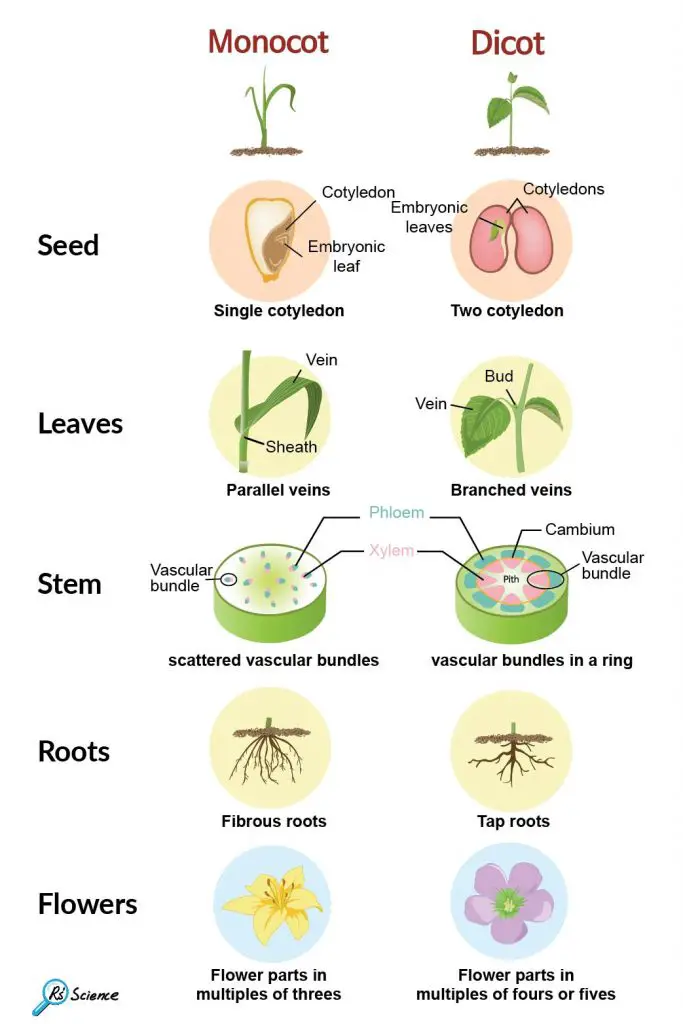
[In this figure] Difference between monocot vs dicot plants.
Questions and activities
Can you tell if they are monocots or dicots by their features?
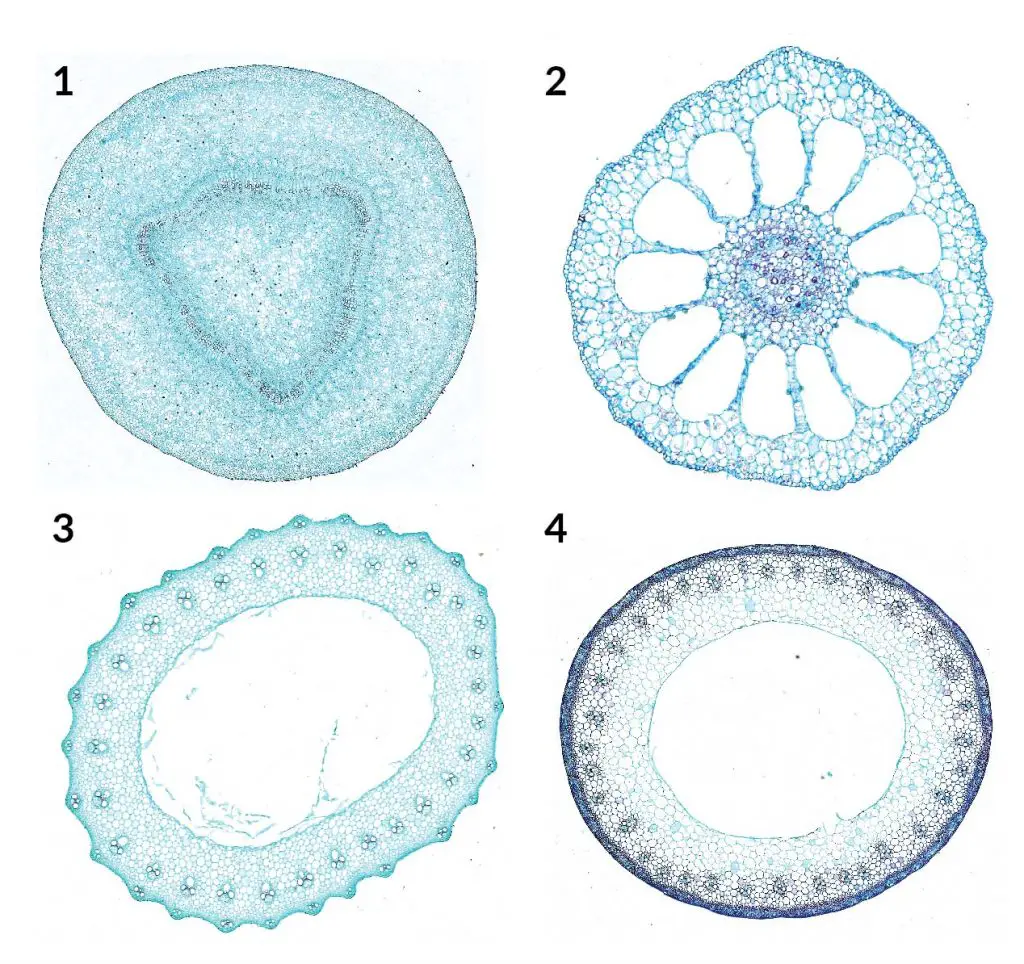
Do you know you can use microtome to create the thin cross sections?
Answers: 1. oleander (dicot); 2. water lily (dicot); 3. rice (monocot) 4. wheat (monocot)
Related posts
Lesson 4: How to Use a Microtome & “Amazing Cross-section of a Stem”
Learning Plant Biology Using a Premade Slide Set

